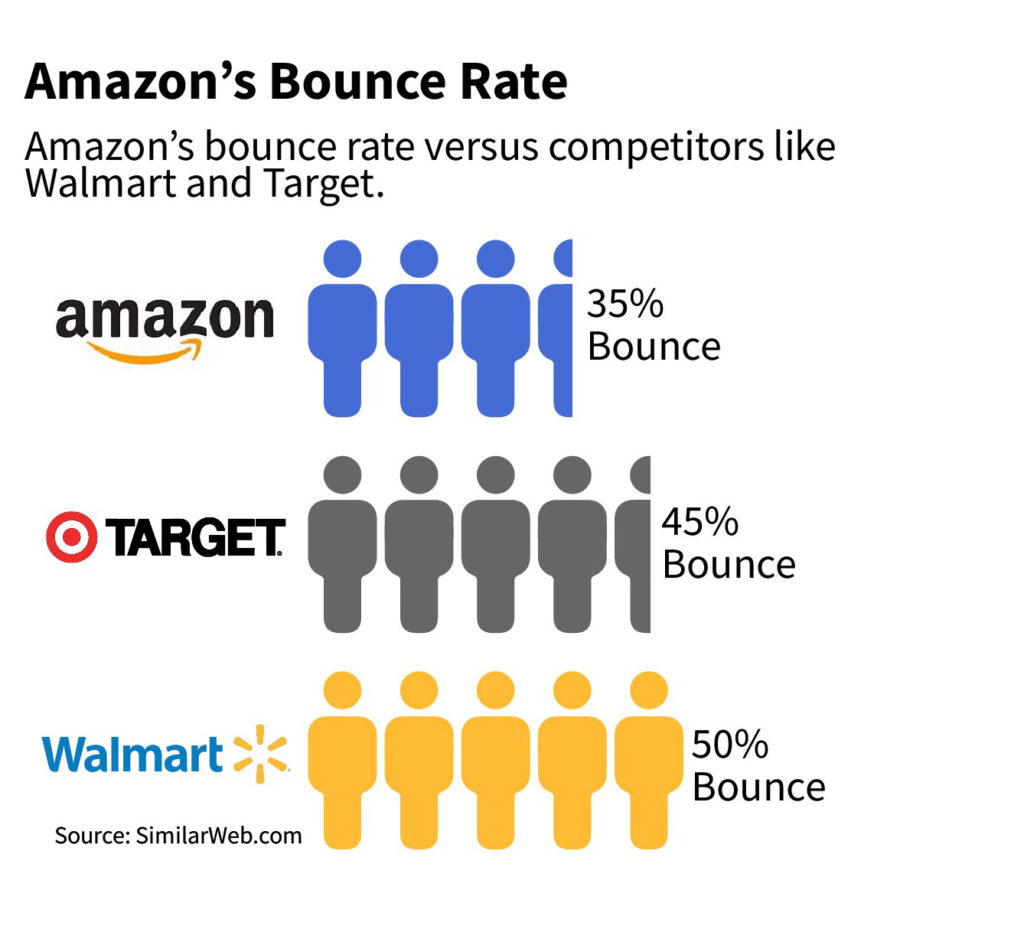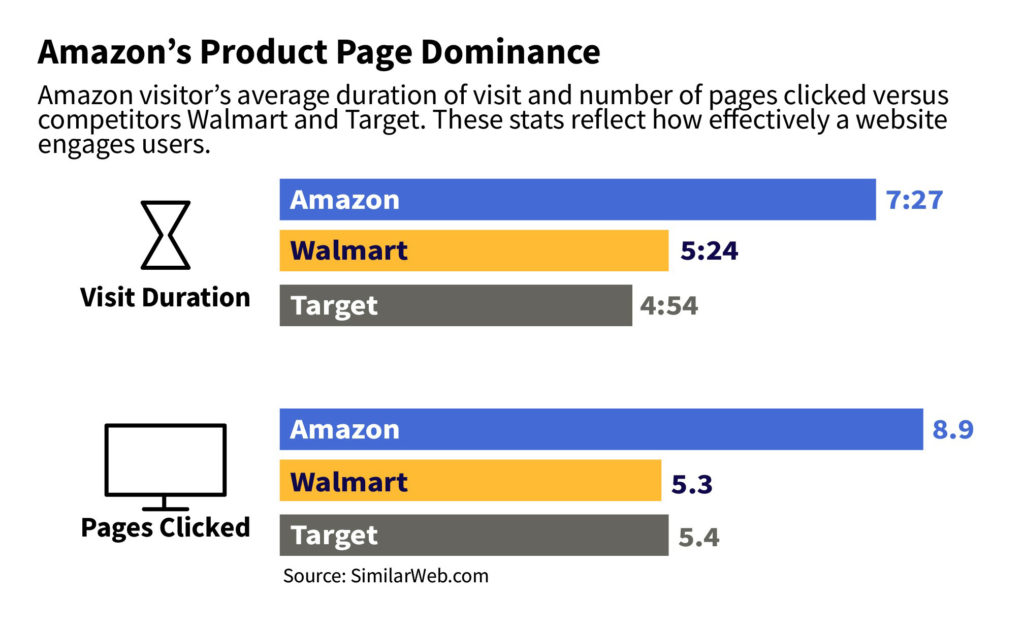In 2015, Amazon launched an online B2B marketplace called Amazon Business. The enterprise was immediately successful, racking up $1 billion in sales in its first year. But what happened next was truly alarming. In 2018, Amazon Business recorded over $10 billion in sales. In 2019, RBC Capital predicted that Amazon would make $52 billion in sales by 2023.
This may be big news for Amazon – its B2B branch is outpacing other key segments and sporting a truly outrageous compound annual growth rate of 115% – but, it is even bigger news for distributors. In five years, Amazon has transformed into one of the largest distributors in existence, making it a truly existential threat for many smaller distributors.
Amazon’s success is not an accident. It is the result of imaginative planning, technological enablement and top-notch execution. In particular, Amazon uses three AI-powered key strategies to satisfy customers and drive elite sales growth.
Over the next few weeks, I will explain and explore these three strategies to give distributors a deep understanding of why Amazon works. Learning these strategies will allow distributors to imitate and innovate on Amazon’s strategies in order to meet unique customer demands and grow mature businesses.
Here’s the first AI-powered secret to Amazon’s success: Product recommendations
How Amazon Uses Product Recommendations
One of Amazon’s most effective sales strategies is using AI-powered product recommendations to engage customers and increase revenue. In action, you might recognize this as offers like “recommended for you,” “products you might like,” “frequently bought together,” or “customers also bought.” These may seem like many different things. But the truth is that they are all instances of a highly effective selling strategy and functional technology.
The key to Amazon’s product recommendations is the company’s ability to monetize data with an AI engine. The purpose of this tool is to make accurate and individualized product pitches for different customers. In order to do this, the program must analyze tons of customer data and product data. Once it recognizes patterns in what customers buy, what customers have similar buying patterns, and what items are bought interchangeably or paired together, it can curate the perfect product pitch for any situation.
As a customer moves through their shopping experience, Amazon uses different types of product pitches to help customers find what they are looking for and nudge them towards buying more. In the following sections, I’ll explain how Amazon uses AI to optimize its homepage, product pages, and checkout page. Even though these examples will look different, it is important to remember that they are all powered by the same sort of AI recommendations.
The Home Page
One of the most important things that an e-commerce site can do is create an engaging home page. This is the first thing a customer will see, and the beginning of their shopping experience. While traditional websites put the burden of action on customers, Amazon uses product recommendations to engage shoppers from the jump.
The company uses its AI recommendation engine to generate and promote a range of products that customers will be interested in. These include sections like “recently viewed,” “recommended items,” and “inspired by your shopping trends.” These engaging features reduce Amazon’s bounce rate significantly. (Bounce rate is defined as the percentage of customers that do not take any further action after arriving on a home page).

As I write this, Amazon’s bounce rate is listed at 35%. Comparable competitors like Walmart and Target, on the other hand, are listed at 50% and 45% respectively. This means that Amazon’s recommendations don’t just directly increase sales, they also draw customers into the shopping experience, creating further opportunities to make smart pitches.
The Product Page
Once Amazon has drawn a customer into the shopping experience, they utilize product page recommendations to further increase their spending. When a customer clicks on a product, Amazon does not just attempt to sell them that product. They also attempt to use that opening to pursue upsells and cross-sells, much like a great sales rep does.
In addition to showing the item that a customer has clicked on, Amazon’s product page also includes features like “frequently bought together,” “similar products,” and “featured items you may like.” These tools keep customers clicking through products and spending time shopping on the website.
Continuing with the example above, the average Amazon customer clicks through nine pages and spends more than seven minutes shopping. The average Walmart and Target shoppers spend just five minutes online while clicking on five pages each. Of course, Amazon doesn’t really care about time online, but what time online leads to; More sales. Using AI recommendations, Amazon turns online browsing into an opportunity for cross-selling, up-selling and other additional sales.

The Checkout Page
When a customer moves on to the checkout page, they are likely done with the shopping experience. But Amazon isn’t done with them yet. The checkout line offers one final opportunity for Amazon to entice customers into buying more. Here’s how they do it.
In the checkout page, Amazon includes promotional sections labeled “recently viewed” and “saved for later.” This allows customers to quickly and easily add items to their cart that they had expressed interest in throughout the shopping process.
The idea here seems to be that once customers have committed to making a purchase, it is easier to nudge them toward making a bigger buy. Grocery stores rely on the same tactics when they offer magazines and gum at the checkout line. Amazon is simply one of the first and best retailers to translate this tactic into an effective e-commerce strategy. Of course, Amazon’s version is a little better than your local grocer because the tech giant can use AI to ensure that these little sales nudges are personalized for each customer instead of just showing gum to everybody.
When all of these subtle pitches and nudges are added up, they can generate truly incredible returns. In total, Amazon’s AI recommendation engine fuels 35% of customer purchases. Calling this a multi-billion dollar strategy is something of an understatement.
Using AI recommendations, Amazon has found a way to consistently engage customers, draw them into the shopping experience, and sell them items they are interested in buying. This is good for those customers and even better for Amazon.
Distributors can use AI to similar ends. However, they’ll need to make several B2B-specific adaptations and create a clear implementation strategy. In our most recent whitepaper, we explain exactly how distributors can do just that.
In the following weeks, I’ll be offering more articles with MDM explaining two other AI-powered secrets behind Amazon’s success.
The post Amazon’s Secret to AI-Powered Product Recommendations appeared first on Modern Distribution Management.





